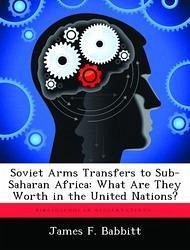This study is an analysis of Soviet arms transfers to sub-Saharan Africa during the period 1974 - 1983. Using a focused comparison methodology, ten sub-Saharan nations are examined in light of two objectives. The first is to describe the range of military assistance relationships that existed between the Soviet Union and sub-Saharan nations during the review period. The second seeks evidence of the ability of arms transfers to assist the Soviets in achieving political influence over client states. The degree of similarity existing between the United Nations General Assembly voting records of the Soviet Union and recipients of Soviet military aid is used as an indicator of political influence. The principal research hypothesis states that if the Soviet Union represents the sole or predominant supplier of military arms and equipment to a recipient country, that country will "mirror image" the Soviet Union's United Nations voting record. The study concludes that the Soviet Union gains political influence as a result of arms transfers when recipient states are confronted with active or imminent military threats. Recipients of Soviet military assistance are unwilling to restructure military forces to align with new sources of supply for military hardware while regime survival is challenged. Therefore, African states, to include Angola, Ethiopia and Mozambique, find themselves obligated to meet the expectations of their Soviet patrons to ensure the continued flow of arms and military equipment. The author states his belief that an understanding of this finding has implications for American foreign policy in sub-Saharan Africa. Rather than a willingness to provide sophisticated weapons to the African continent in an attempt to counterbalance Soviet transfers, the study proposes that the interests of the United States would be better served by finding means to reduce the African need for arms.








